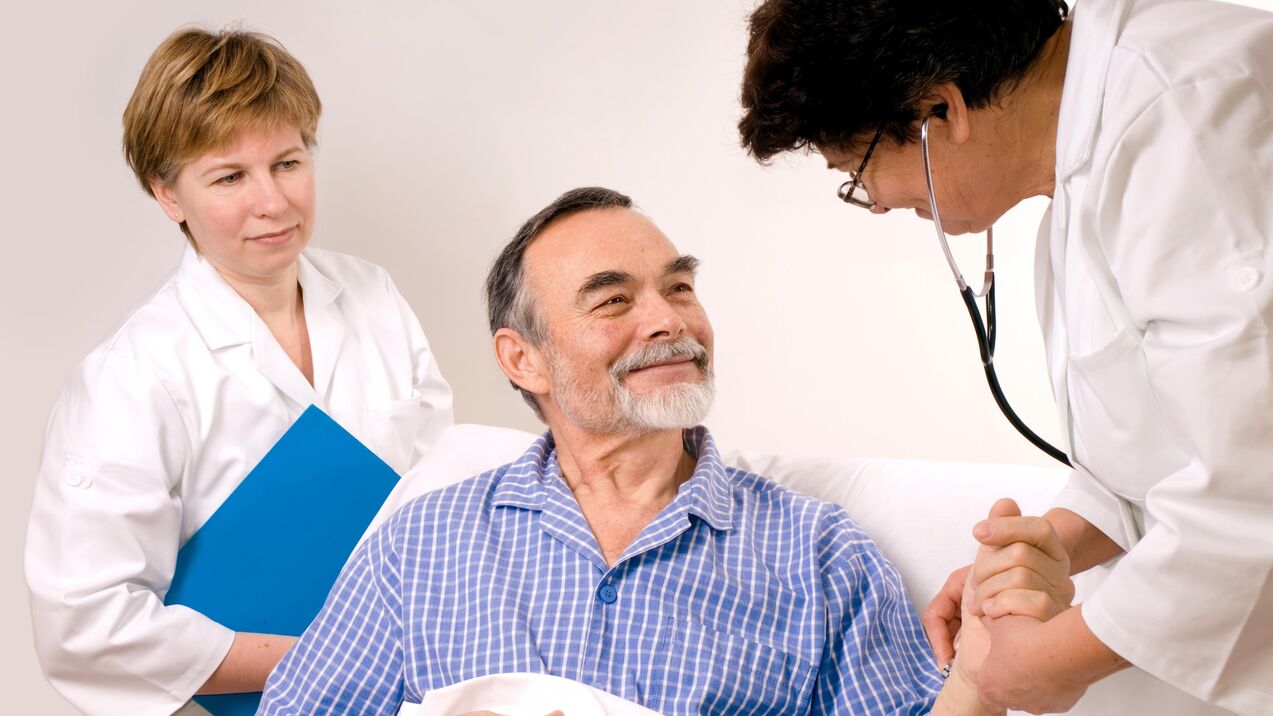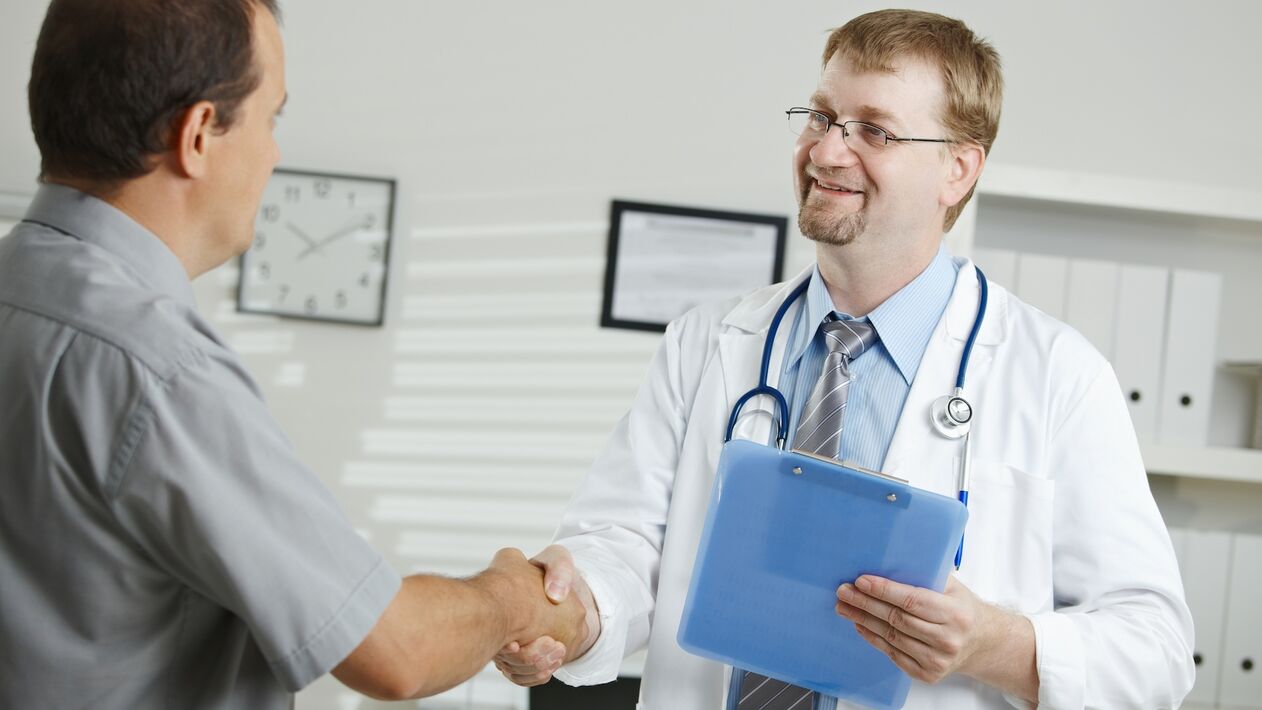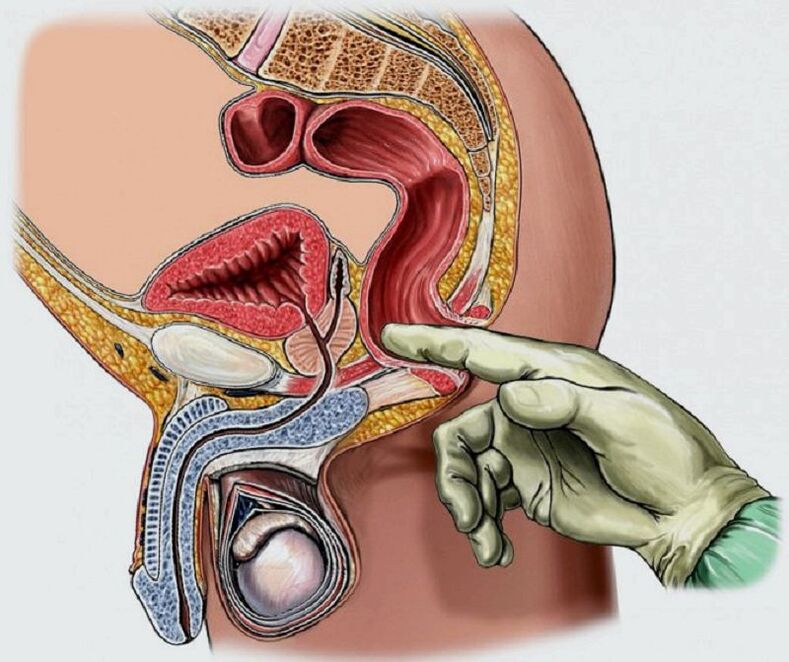Almost all men perceive urological diseases as terrible discomfort, monotony and inability to continue their normal life. Many people are thinking about how to treat prostatitis, but not everyone decides to quickly bring this problem "to the people" and share the news of life even with a doctor.

Before you gain secret access to information on the Internet or ask close friends, remember that prostatitis is an individual disease and therefore requires careful and delicate treatment. You should not think that such a male problem is inherent only in antisocial people who lead a not very cultural way of life, or in those who have lost the number of "sexual victories".
Some infectious types of prostatitis:
- Bacterial. The reason for the appearance of this type of infectious prostatitis is the active effect on the body of bacteria: Escherichia coli, staphylococcus aureus, Pseudomonas aeruginosa and streptococcus. These microorganisms can enter the prostate directly or from other organs through the blood or lymph.
- Viral. The reason is the activation of cytomegalovirus, herpes virus and human papillomavirus, which can threaten not only the prostate gland but also other organs.
- mycoplasma. They are caused by intracellular organisms - mycoplasmas, which contribute to other inflammations in the genitourinary system.
- Trichomonas. The simplest reason for men - Trichomonas.
- Gonorrhea. This type of gonococcal pathogen can also cause prostatitis at any age.
- chlamydial. In men, this is the most common type caused by intracellular organisms - chlamydia.
- Tuberculosis. Koch's rods, which are located in the prostate gland, are most often transmitted by other organs, which indicates a serious disease of a man with tuberculosis.
- Fungal. Most likely it is non-infectious prostatitis, as it is caused by a person's own microflora - Candida fungus, which is activated by reducing the body's overall immunity or by uncontrolled intake of antibiotics.
- Mixed. There are two or more types of prostate infections, but fortunately they are rarely recorded because it is very difficult to completely cure this type of prostatitis.
What does medicine offer?
Prostatitis treatment is the process of eliminating inflammation or congestion in the prostate. This is correct, but it should be understood that it is possible to cure successfully only if the cause is eliminated. So, how to properly treat prostatitis in men?
For treatment in a sanatorium, outpatient or hospital of the best clinic, you should always start with a diagnosis, identifying the cause of the male problem. It is necessary to determine with a smear of the urethra why the pain began in the lower back, lower abdomen, whether there is an infection or bacteria in the prostate. In the presence of infectious-bacterial causes, antibiotic therapy is prescribed. Its time in each case is individual, depending on the degree of damage to the body from infection.
Prostatitis at the age of 25 most often arises from systemic hypothermia. In the pursuit of fashion, young men, starting from the transition period, wear "terribly beautiful" but not warm things (jeans). Therefore, in this case, antibiotic therapy will be needed, but not so serious.
Stressors that provoke prostatitis should be treated by a neurologist. Electrophoresis, relaxing massage and vitamin therapy are most often prescribed.
Important! If the cause of prostatitis is not eliminated, then all methods of treatment can be not only useless but also dangerous.
Basic treatment regimen

Prostate disease is quite dangerous, so only a doctor should prescribe a course of therapy.
How to cure prostatitis most effectively? The most commonly used methods are described below:
- Antibacterial drugs. Effective only if the prostatitis is infectious.
- Alpha blockers. They act on the smooth muscles of the muscles of the prostate gland, which contributes to its rapid recovery.
- Hormonal agents. They help to quickly eliminate hormonal disorders in the male body.
- Muscle relaxants. Relieve tension in the striated muscles of the prostate.
- Phytopreparations. Made on the basis of medicinal plant components, they are used as aids in the treatment of prostatitis.
- Physiotherapeutic methods.
- Popular folk remedies.
- Surgical intervention. It is prescribed only when all the above methods have not been effective.
Methods to deal with the problem
Laser therapy, or laser treatment of prostatitis, is used in subacute and chronic forms of prostate disease. This allows you to increase the defenses of the male body and heal the acinus. Before the procedure, the bladder must be partially filled.
In the chronic form of prostatitis, the laser is often used in conjunction with drugs. It is effective in severe forms of prostatitis, which occur without obvious symptoms. The man may feel better after the first course of laser procedures.
Indications for the use of the laser:
- stagnant and bacterial forms of chronic prostatitis;
- urogenital infections;
- copulatory dysfunction and interreceptive infertility revealed as a result of prostatitis;
- neurovegetative prostate disease and prostatitis with prostate adenoma;
- stricture of the urethra.
New in the treatment of the prostate gland - prostatitis patch (click on the link for detailed information! ). The urological umbilical patch, made in China according to a recipe from ancient times, contains extracts of medicinal herbs (safflower dye, cinnamon, Asian plantain, belt, two-toothed gemstone, dubious corridalis and Bornean camphor).
This complex has a strong stimulating effect on the prostate in both 19-year-old boys and adult men, increasing blood circulation and reducing inflammation. Its use effectively relieves pain in the scrotum and perineum, stops the development of edema and improves the process of urination. Of course, nonspecific prostatitis cannot be treated with a patch alone; additional antibiotic therapy will be required.
Chinese healers call it "real men's patch" and are sure that it cures prostatitis at home and really gets rid of the disease in just a few months, as the therapeutic effect of one patch lasts at least 3 days. Some expertsare somewhat skeptical about the statements of their Chinese colleagues and do not undertake to answer unequivocally whether it is possible to completely cure prostatitis with a single patch. This question is still open.
Antibiotic therapy for prostatitis
When an infection is detected, doctors prescribe drugs to which certain microorganisms are sensitive. It should be borne in mind that not all antibiotics can get into the tissues of the prostate gland, this sometimes complicates the healing process.
If the infection is not completely eradicated, recurrences of the disease are possible.
Groups of antibiotics for prostatitis:
- fluoroquinolones;
- macrolides;
- cephalosporins (3rd generation);
- penicillin group;
- tetracycline.
The course of treatment should last at least 4-8 weeks. Each drug is prescribed only by a doctor and only after examination of the patient.
Alpha-blockers can be treated when the sphincter opening is damaged. Smooth muscle spasm needs to be treated quickly so that the man has an increased rate of urination and a decrease in the pressure of urine on the walls of the bladder. The course of treatment is at least 1, 5-2 months.
Can prostatitis be cured with hormone therapy? For single use - no. They are effective only in combination with other procedures, contribute to the normalization of hormone levels in the body of men, reduce the number of glands in the tissues of the prostate gland, as a result of which inflammation becomes less intense.
Physiotherapeutic methods

Physiotherapy can be an excellent additional method in the fight against the disease.
Physiotherapeutic methods that can be used to treat the pathology include:
- massage directly on the prostate gland;
- strengthening (relaxation) of the pelvic muscles;
- impact on trigger (myofascial trigger) points;
- acupuncture;
- neuromodulatory treatment.
Should we put a leech?
The way to treat prostatitis with leeches today has found a rebirth. To treat prostate disease with hirudotherapy, you will need the knowledge and good qualifications of a doctor. Leeches can not be placed on some areas of the skin - inflamed and where the skin is too thin, there is a possibility of prolonged bleeding.
Bloodsuckers are placed in the anus with prostatitis according to the "X" scheme, where the center of the letter is the anus and the ends are leeches. According to another scheme, leeches are attached on both sides of the middle suture of the perineum, pulling back 2 cm. Usually no more than 4 leeches are attached to one session, the whole course consists of 4-5 days with mandatory breaks of about a week.
How to treat prostatitis among people
Problems with the prostate gland in men have always been, do not think it is a "disease of the 21st century". How to diagnose prostatitis is known in ancient times. All folk remedies can be combined with basic methods, as well as withpreventive measures for young men The most popular remedies are propolis, parsley, pumpkin seeds and red root.
Surgical intervention
Surgery for prostatitis is indicated only when it becomes vital. In other cases, doctors try to avoid surgery in such a delicate place.
The operation is appointed only in some cases:
- Obstruction of the urethra when there is a narrowing of the urethra. At the same time, it becomes impossible to walk a "small path" and the only way out is surgery. In most cases, phimosis is added to the blockage when it is difficult to open the glans penis.
- Drainage of the prostate with its abscess. If pus accumulates in the tissues of the prostate, it is necessary to remove it from there and rinse the cavity. All manipulations are performed with a special needle.
- Restoration of seminal vesicles when they have lost their function due to inflammation, so the withdrawal of prostate secretion is difficult.
- Partial or complete removal of the prostate. Needed for sclerotic changes in the prostate or adenoma. It is appointed only when all methods have not given positive results.
Exercise
Prostatitis can be cured with an integrated approach, including the use of simple sports, as it is associated with congestion. It is necessary to increase the blood supply to the prostate and its supply of oxygen. To do this, you need to perform a series of exercises that will increase blood flow to the muscles.
Useful:
- walking;
- jogging;
- squats;
- press exercises.
The well-known birch exercise can easily be done at home several times a day.
Massage

A combination of medication and prostate massage gives a good result in the treatment of the disease.
Method based on mechanical impact on body tissues with hands or special devices. The essence of the procedure is that the receptors of the skin and muscles perceive the irritations and transmit them to the central nervous system. As a result, the tone of the central nervous system increases and through it there is a positive effect on the activity of all physiological systems.
Precautions for treatment
Contraindications to prostatitis should be taken into account when choosing any method of treatment.
- In the acute form it is impossible to analyze prostate secretion due to severe pain, in some men this procedure can cause pain shock. You should not perform any physiotherapy procedures (massage, warm-up, etc. ).
- Drinking and smoking are strictly forbidden, as this leads to impaired venous circulation and irritation of the prostate. Proper nutrition is the key to a healthy prostate, so fizzy drinks, energy drinks, smoked meats, spicy and fatty foods should be avoided.
- Massage is not performed in acute and bacterial forms of prostatitis, in malignant neoplasms in the prostate, in the presence of stones and urinary incontinence. Also, do not massage with hemorrhoids, proctitis, paraproctitis, adenoma and some diseases of the urinary system.
- In chronic prostatitis it is impossible to carry out mud therapy, sunbathing and water treatments, which can lead to overheating or hypothermia of the body.
Finally, no less important question - where to treat prostatitis? Only in a specialized clinic under medical supervision. Some procedures can be done at home, but they must be agreed with your doctor. Remember that a healthy prostate is the comfort of a man, a quiet intimate family life and strong offspring.



























